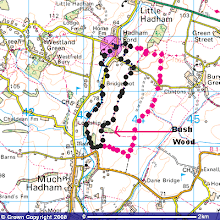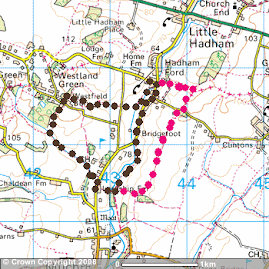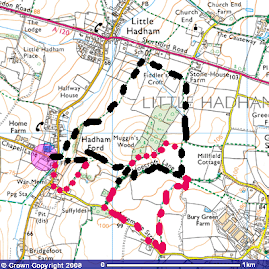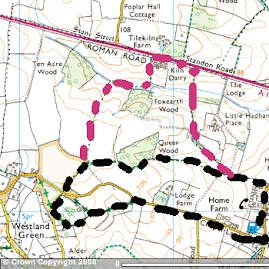Another trip to Norfolk as the weather forecast looked good. This was not always the case however, with overcast, if warm conditions most of the day. I decided to begin at Cley and finish at Titchwell as the light is often better there in the late afternoon.
After emptying the moth trap, I set off at 5.15 and was on the reserve at Cley by 7.30.
The first bird of the day was a strange one: a cormorant flying over the M11, whilst the first year lister was a good tick: goshawk over the road some 3 miles south of Swaffham, near the pig farm with the conifer forest. Huge female flew low over the road.
At Cley a little gull showed well from Daukes Hide, whilst also yellow wagtail, common, green and wood sandpipers. A check from the Bishop's hide gave views of 2 curlew sandpipers coming into land, one in very smart summer plumage. From here, a wander along the East Bank to Arnold's where another wood sandpiper was noted. Greenshank, curlew and little egret whilst out to sea, 5 common scoter flew west. I met with David and Brian and we headed back to the centre for a coffee. Chats about space, astronauts, birding Cley in the '70's etc. All good memories of good birds, such as ortolan, marsh sandpiper, rustic bunting and memories of Richie Richardson.
They then headed for Stiffkey Fen whilst I though Kelling Water Meadows may turn up something good.
 |
| red legged partridge as I headed for the hides. |
 |
| Plenty of birds to check: godwits and ruff, mainly |
 |
| little gull |
 |
| Black tailed godwit from Daukes Hide |
 |
| 1st of several wall browns |
Having parked at Kelling I wandered along the track: usual fare; chiffchaff, sedge warbler, good selection of usual butterflies, southern hawker, common blue damselfly and common darters. The water levels were exceptionally high due to heavy rain so on the water meadows just black headed gulls and 2 med gulls. Stonechat in a superb state of disrepair whilst I checked for red-veined darters, but not enough sun to encourage them on to the path. However, a female hepatic cuckoo flew from a post before I could get a shot. I had another one of these back in May whilst guiding 3 people, strange to see 2 in the same place. This, as the previous one, a full adult, so possibly the same bird.
 |
| Another wall brown, different markings to the Cley individual |
 |
| Presumed common blue |
 |
| moulting sedge warbler |
 |
| common darter |
 |
| Tatty stonechat |
 |
| Immaculate red admiral |
From here, I drove to Stiffkey Fen, now a good site for spoonbill. Not disappointed with at least 24 on show, along with godwits, gadwall, geese, common sandpiper, ruff etc. A check over to Blakeney harbour showed well over 300 oystercatchers. Butterflies were everywhere, with a small copper and grayling being added to the list. Always a good place to visit, even when the footpath could benefit from a hedge trim. A common buzzard soared as I headed back to the car.
 |
| spoonbills at Stiffkey Fen |
 |
| meadow brown |
 |
| underwing of meadow brown |
Titchwell was just emptying as I arrived about 4.30, so very peaceful. Huge increase in migratory waders whilst avocet numbers, which peaked at 600+ a few weeks ago now considerably lower.
A search for a white rumped sandpiper on Freshmarsh turned up good numbers of dunlin and 2 curlew sandpipers. More wood sands, too along with ruff, godwits, juvenile yellow wagtail etc.
Along to the beach and a quick check on Volunteer Marsh proved useful, in the distance, with a redshank and several dunlin, a smaller bird with bright supercilium, the white rumped sandpiper. Not anything of note on the beach so back to the Parrinder Hide,, where a 2nd summer yellow legged gull was noted. The walk back to the island hide gave good views of dunlin, little ringed plover, ruff and avocet, with more of the same from the hide. Back to the carpark and a quick trip up to CXhoseley for early migrants, but nothing but a few yellowhammers.
A super day and now looking forward to returning tomorrow (Friday 14th) for a few days camping at Stiffkey. Maybe an early morning visit to the gibbert roundabout or Stffkey Fen.
 |
| moulting dunlin |
 |
| first year ruff |
 |
| sharp plumage! |
 |
| Posing dunlin |
 |
| Little ringed plover from footpath |
 |
| adult ruff |
 |
| Freshmarsh |
Species List:
littlegrebe, great crested grebe, cormorant, little egret, grey heron, sponnbill, mute swan, greylag, Canada goose, shelduck, mallard, gadwall, teal, pochard, red crested pochard, common scoter, marsh harrier, common buzzard goshawk, sparrowhawk, kestrel, red legged partridge, pheasant, moorhen, coot, oystercatcher, avocet, little ringed plover, grey plover, lapwing, knot, turnstone, dunlin, curlewsandpiper, common sandpiper, green sandpiper, wood sandpiper, white rumped sandpiper, redshank, greenshank, spotted redshank, black tailed godwit, bar tailed godwit, ruff, curlew, black headed gull, Mediterranean gull, common gull, herring gull, lesser balck backed gull, yellow legged gull, little gull, sandwich tern, common tern, wood pigeon, collared dove, cuckoo, barn owl, skylark, sand martin, swallow, house martin, meadow pipit, pied wagtail, yellow wagtail, wren, robin, dunnock, stonechat, blackbird, whitethroat, sedge warbler, cetti's warbler, reed warbler, chiffchaff, great tit, blue tit, bearded tit, magpie, jay, jackdaw, rook, carrion crow, starling, house sparrow, chaffinch, green finch, bullfinch, goldfinch, linnet, reed bunting, yerllowhammer.
91 species day.
Butterfly species:
Large white, small white, green veined white, wall brown, grayling, speckled wood, red admiral, peacock, common blue, small copper, gatekeeper, meadow brown.

















































































































